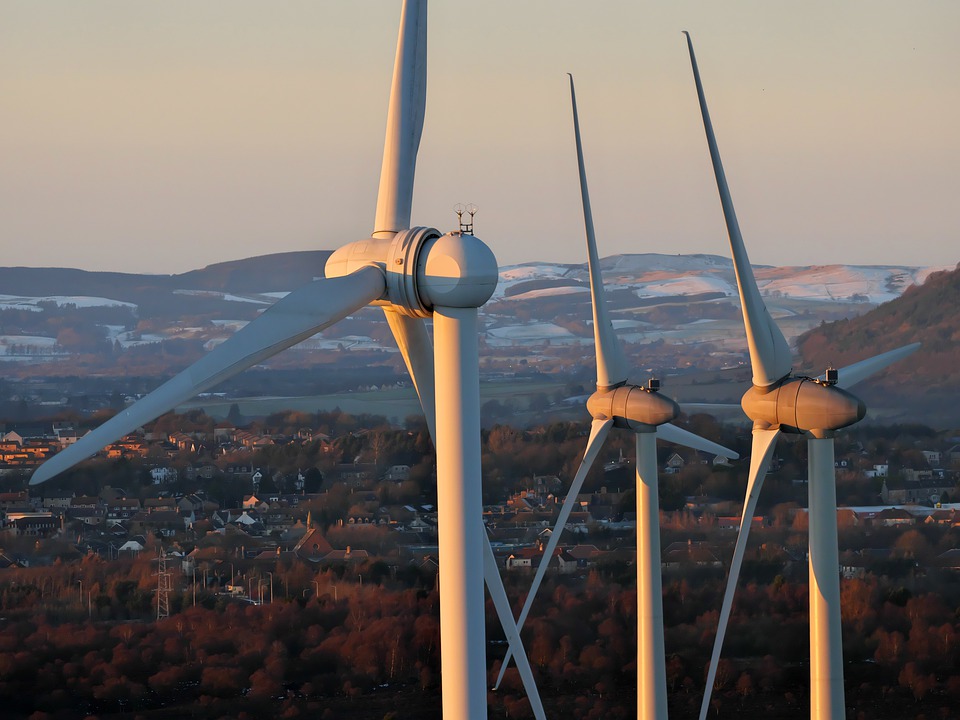Wind power could be the future to meet the energy needs of businesses

[ad_1]
Windmills wind farm Scotland Great Britain electric power. Photo: Maximum pixels.
The world has already found innovative ways to produce energy in a sustainable way without depending on coal, oil and natural gas. However, there is still a long way to go.
In addition to the changes we make as individuals, businesses must adapt their operations to use greener energy sources, such as wind power.
With British Prime Minister Boris Johnson pledging that by 2030 offshore wind farms will produce enough electricity for every household in the UK, the race is on to make wind power the future.
But what does the future of business look like? Here we discuss whether wind power will be the future to meet the energy needs of UK businesses.
Wind energy: the pros and cons
In short, wind power depends on wind turbines to generate electricity. When the blades spin, they spin a generator and a shaft that converts energy into electricity.
The UK is one of the best places in the world for wind power. So why isn’t it used more often by businesses?
Here, Northern Powergrid discusses the pros and cons for businesses to use wind power as an electrical connection.
Benefits
- It is one of the cleanest forms of energy. Since no fossil fuels or other polluting forms of energy are needed, wind power will provide your business with clean, low carbon energy.
- Offshore wind farms can produce a large amount of energy because there is more wind at sea. For businesses, having a reliable energy supply is vital to avoid operational delays.
- Offshore wind farms provide reefs for fish. Not only do they have very little impact on wildlife, they are also an incredibly environmentally friendly way to generate energy.
- In 2019, the report “Renewable Power Generation Costs in 2019†found that it costs more to keep coal-fired power plants in operation than to operate onshore wind farms. Besides the environmental benefits, there are also cost benefits.
The inconvenients
- For offshore wind farms, these can be expensive to build and repair.
- When turbines are not running, they depend on fossil fuels for backup. This means that wind turbines do not always provide absolute green energy.
- Wind turbines have an impact on the views. Since terrestrial turbines tend to be built on hilltops, they can be seen as negative damage to some landscapes.
Wind energy and business energy: the requirements
With the pros and cons considered, the environmental aspect of wind power undeniably has many advantages. However, the question of whether wind turbines are the energy future of companies is not limited to environmental factors.
The overall question is whether wind power can produce enough to power businesses year round and how the energy sector balances its overall electricity profile in a low carbon way.
The amount of electricity UK businesses need per year is as follows:
- Micro-enterprises may need 5,000 to 15,000 kWh each.
- Small businesses may need 15,000 to 30,000 kWh each.
- For medium-sized companies, they are on average 30,000 to 50,000 kWh each per year
When it comes to the amount of gas consumed by UK businesses per year, the average also varies depending on the size of the business:
- Micro-enterprises need around 10,000 kWh each
- Small businesses need around 25,000 kWh each
- Medium-sized businesses need around 45,000 kWh each
The level of production per wind turbine varies depending on its size and the speed at which the wind travels through the rotation. The more wind, the more energy.
An onshore wind turbine with a capacity of 2.5 to 3 MW would produce around 6 million kWh of energy per year, supplying an average of 1,500 homes with electricity.
So, is there enough wind power for UK businesses?
The average UK household needs around 3,700 kWh of electricity per year and 12,000 kWh of gas. To help provide this, there are currently 8,600 onshore wind turbines and 2,300 offshore wind turbines in the UK. Compared to the amount of energy that businesses need on average per year, it is clear that more wind turbines are needed to generate enough electricity to cover both homes and businesses.
However, that does not mean that it is not an unrealistic goal for the UK to achieve. With the government setting many goals to help reduce the impact of climate change, a big part of that is finding more environmentally friendly sources of energy.
Although the initial investments can be high, in the long run wind power can cost less than coal-fired power as mentioned above. It is therefore financially possible that wind energy will be the future power of companies.
In terms of reliability, some issues were raised. If wind power causes delays in the supply of electricity and gas to businesses, this could have a significant impact on business production levels. Therefore, other sustainable energy resources, such as solar panels, may be more beneficial.
Or, another solution is to strategically place the wind turbines in specific locations. For example, since offshore wind turbines are exposed to higher wind speeds and consistencies, investing in more offshore wind farms will help prevent the problem of energy inefficiencies for businesses.
There is no possible way to give a definitive answer on what the future holds for energy sources for businesses. However, one thing is certain, the switch to wind power is a possibility and a mix of local carbon energy generation technologies will be essential to achieve the balance necessary to power our lives.
With more investment in the efficiency and scale of wind farms to provide enough electricity to businesses, the future could be much greener.
[ad_2]
